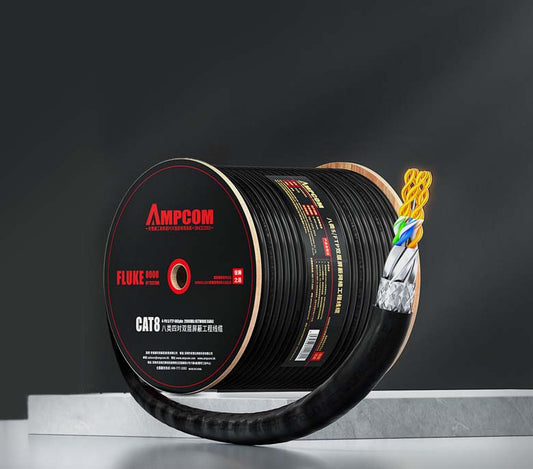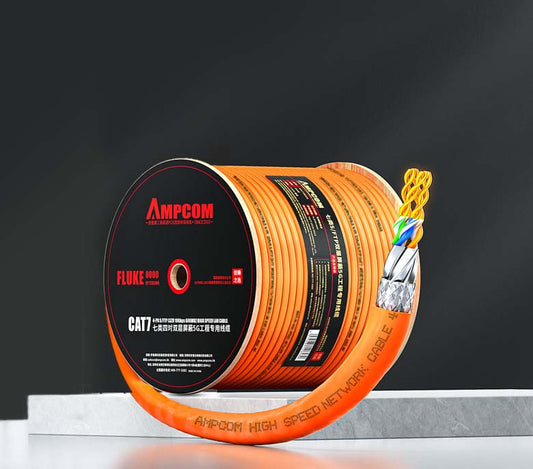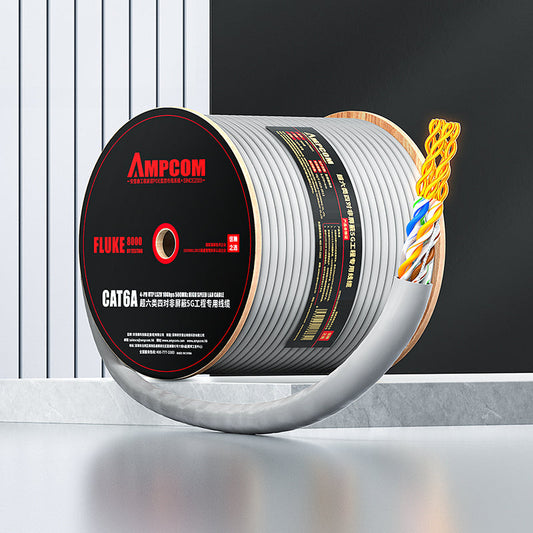Alien Crosstalk in High-Density Bundles: Testing & Mitigation
Alien Crosstalk in High-Density Bundles: Testing & Mitigation
Introduction
As networks continue to grow in size and complexity, the need for high-density installations in data centers and enterprise environments has increased. With this increase in cable density, network engineers face a rising challenge: Alien Crosstalk (AXT). Alien Crosstalk refers to the interference caused by nearby cables, which can disrupt the performance of Ethernet cables, especially in high-density bundles like those used in Cat6a installations. In this article, we will explore the concept of Alien Crosstalk, how to test for it, and the mitigation strategies you can employ to ensure a high-performance network.
What is Alien Crosstalk?
Alien Crosstalk (AXT) occurs when signals from one cable interfere with signals on an adjacent cable, especially in high-density bundles where cables are placed close together. It is particularly a concern for high-speed data transmission such as 10GbE (10 Gigabit Ethernet) that is used in Cat6a cabling. The interference can cause a significant performance degradation, leading to errors and packet loss that reduce network efficiency.
Unlike traditional crosstalk (near-end crosstalk, or NEXT), which occurs between pairs within a single cable, alien crosstalk happens between cables. This phenomenon is amplified in dense cable bundles, where electromagnetic interference (EMI) from multiple cables becomes more pronounced.
Causes of Alien Crosstalk
Alien Crosstalk is mainly caused by the following factors:
- Cable Density: As more cables are installed in close proximity, the chance of signal leakage increases. High-density bundling amplifies the electromagnetic field around each cable.
- Improper Shielding: If the cables are not shielded properly, the unshielded cables are more prone to external interference, which contributes to alien crosstalk.
- High-Speed Transmission: Faster data transmission rates, such as 10G over Cat6a cables, are more susceptible to alien crosstalk due to the higher frequencies involved.

Testing for Alien Crosstalk
Testing for alien crosstalk is crucial to ensure network reliability, especially when deploying high-density bundles of Cat6a or higher cables. There are several methods to test for AXT:
- Fluke Networks DSX CableAnalyzer™: A common tool used for testing Cat6a cables for alien crosstalk. It provides detailed results about crosstalk levels and helps identify cables that exceed acceptable limits.
- Time Domain Reflectometer (TDR): TDRs can be used to measure impedance mismatches and crosstalk issues by sending signals along the cable and analyzing the reflection pattern.
- Attenuation-to-Crosstalk Ratio (ACR): This method involves measuring both the attenuation of the signal and the crosstalk to ensure that the cable meets performance standards.
Testing is essential not only to identify potential performance issues but also to comply with network standards. For Cat6a cables, AXT levels must fall within the specified limits to ensure the network runs smoothly at 10Gbps or higher speeds.
Mitigation Strategies for Alien Crosstalk
Reducing Alien Crosstalk in high-density bundles requires both design and installation considerations. Here are some effective strategies:
- Proper Cable Separation: Ensuring cables are spaced correctly during installation can reduce the amount of interference. Avoid tightly bundling cables, and leave enough space between cable runs.
- Shielded Cables: Use shielded twisted pair cables (STP) or screened twisted pair (ScTP) cables, which provide an additional layer of protection against interference.
- Twisting Pairs: Twisting the pairs inside the cable helps reduce electromagnetic interference between the pairs, making the cable more resistant to alien crosstalk.
- Use of Cable Trays and Proper Routing: Installing cables in well-organized cable trays, rather than letting them hang loose, can minimize the chances of them overlapping or running too close together.
- Limiting Cable Lengths: Reduce the length of the cables in high-density areas. Longer cables can increase the susceptibility to alien crosstalk and performance degradation.
- Balanced Transmission Power: Ensure that the PoE devices are properly configured so that transmission power is distributed evenly across cables, reducing signal interference.
Alien Crosstalk Mitigation in Data Centers
In data centers, where large volumes of high-speed connections are needed, alien crosstalk mitigation becomes even more important. Data center cables are often bundled tightly together, increasing the likelihood of interference. Here are a few additional best practices for data center environments:
- High-Quality Cable Selection: Opt for high-performance cables that are designed to meet Cat6a or Cat7 standards, ensuring better shielding and crosstalk reduction.
- Optimized Cable Management: Implement proper cable management techniques, such as cable ties and trays, to prevent cables from being twisted or bent.
- Regular Testing and Auditing: Continuously monitor and test the cabling infrastructure to ensure it meets performance standards and is not susceptible to alien crosstalk over time.
Conclusion
Alien Crosstalk is a common challenge in high-density network installations, but with the right testing and mitigation strategies, its effects can be minimized. Proper cable management, shielding, and testing tools like the Fluke Networks DSX CableAnalyzer™ can ensure that your Cat6a cables and other network connections perform at their highest potential, without interference. By following best practices for testing and mitigation, you can improve network efficiency and ensure your installations are future-proofed against interference.
For more details on alien crosstalk testing and mitigation techniques, explore our other articles on Network Jumpers & Testing, Data Center Pitfalls, and Cat6 10G Performance.
FAQ Section
- What is Alien Crosstalk (AXT)?
- Alien Crosstalk (AXT) refers to the interference between cables in high-density bundles that disrupts data transmission. This occurs when signals from one cable interfere with signals on an adjacent cable, causing performance issues in Ethernet networks.
- How do you test for Alien Crosstalk?
- Alien Crosstalk can be tested using tools like the Fluke Networks DSX CableAnalyzer™, Time Domain Reflectometers (TDR), and Attenuation-to-Crosstalk Ratio (ACR) methods. These tools measure signal interference between cables and ensure compliance with network standards.
- What are some ways to mitigate Alien Crosstalk?
- Mitigation strategies include using shielded cables, optimizing cable routing, maintaining cable separation, and using higher-quality cables with better insulation and shielding. Proper cable management and regular testing can also help reduce AXT.
- Why is Alien Crosstalk a concern in data centers?
- In data centers, large quantities of high-speed cables are bundled together, making them highly susceptible to Alien Crosstalk. This can cause data loss and slow down network speeds. Proper cable management and shielding are essential to prevent this issue.



